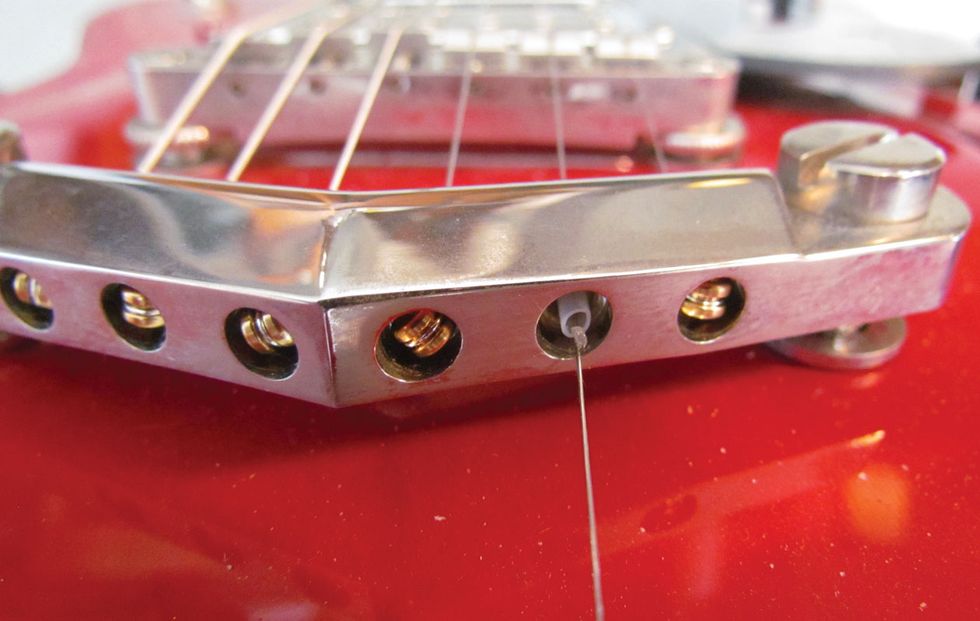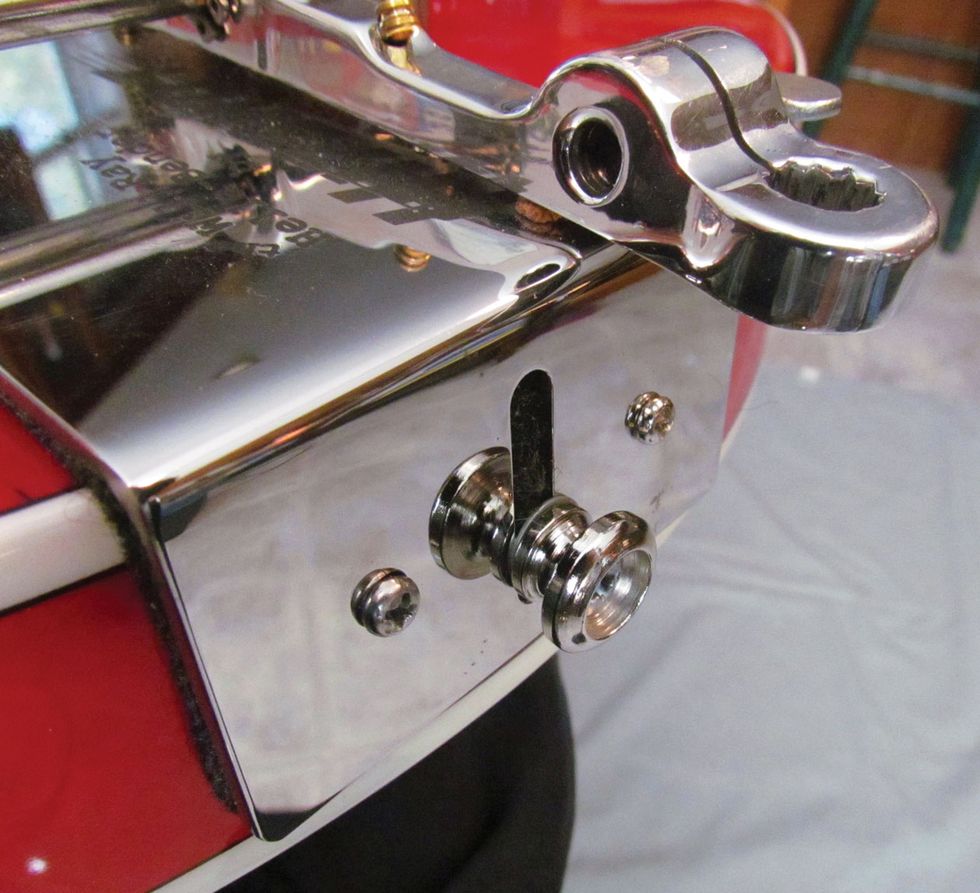A while back, I wrote about a fat-bodied Gretsch Streamliner jazz guitar I acquired pretty cheap. That purchase started me on a Gretsch odyssey. One thing I’d never done with a Gretsch was to install a Hipshot bender. Most Gretsch models have either a Bigsby or trapeze-type tailpiece, which would prevent using a bender. But a few models have a kind of V-shaped stop tailpiece, a few inches from the bridge, and that got me thinking. I wasn’t sure how well it would work, but I was committed to at least trying to mount a Hipshot on a Gretsch.
The first step was to find a guitar cheap enough to experiment on. So I scoured eBay and found this red G2655 for $350, including a hardshell case. I’m a gig-bag guy, so I figured I could sell the case for $50 on Craigslist and that would drop my price to only $300, which seemed like a good deal. So I pulled the trigger.
Hipshot units include a Teflon tube that routes the B string through the tailpiece to the B-bender.
I received the guitar a few days later, unpacked it, and was immediately struck by how light it felt. The first thing I did was raise the V-shaped stop tailpiece to create a less severe angle for the strings going over the bridge, so the bender string would not get hung up and go out of tune. Then I took off the rear strap button, slapped the Hipshot on, and threaded the B string through a small Teflon tube going through the stop tailpiece. After playing a few moments, I discovered that the B string would not stay in tune because the bender shifted around too much at the strap button.
Even a minuscule tilt of the Hipshot will cause tuning problems, but luckily the Hipshot comes with two pre-drilled holes that straddle the strap button, just for such an occurrence. So, with the top of the Hipshot pressed as tight against the guitar body as I could hold it, I drilled two small holes into the body using the Hipshot holes as a guide. Then I anchored the Hipshot tightly against the guitar body at the strap-button end using two small flat-head screws. Voilà! I was in business and it only took about 15 minutes.
And here’s the bending mechanism: The piece that extends past the guitar body holds a rod, which you press against your hip when you want to raise the B string. A knurled screw at the front of the unit’s “telegraph-key” lever lets you adjust the fine-tuning.
Now the Hipshot stays perfectly in tune because it no longer moves around. The beauty of the Hipshot is that you don’t have to rout out large sections of the body to install it. Also, if you sell the guitar down the road, you can simply unscrew the Hipshot and take it with you. And most people won’t be bothered by any small holes that the strap hides, anyway.
By the way, I ended up selling the hardshell case on Craigslist for $65, reducing my cost of the guitar to $285. Not bad! Man, this guitar is so much more fun to play with the Hipshot. And, believe me, you won’t find too many Gretsches out there with benders.










![Rig Rundown: Russian Circles’ Mike Sullivan [2025]](https://www.premierguitar.com/media-library/youtube.jpg?id=62303631&width=1245&height=700&quality=70&coordinates=0%2C0%2C0%2C0)


























